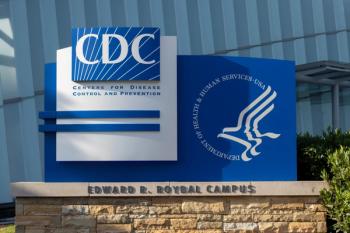
The Power of 3: Balance in the Demand for Pharmacists
There has been considerable conversation lately regarding a perceived lack of jobs for pharmacists.
There has been considerable conversation lately regarding a
For the past 15 years, the Pharmacy Workforce Center (PWC) has used the ADI to assess the relative balance between supply and demand in the pharmacist job market, with a score of 3.0 indicating a match between the number of jobs and the number of pharmacists. The PWC has recorded aggregate demand numbers regionally and nationally as high as 4.5 on a 5-point scale (indicating a severe shortage of pharmacists) and as low as the recently reported 2.96.
What does this number mean? Well, we know that 2.96 rounds up to 3, which means that nationally, there is a sufficient number of pharmacists to meet the current demand.
How is this number calculated? From panelists who primarily represent employers within the traditional pharmacy practice settings of chains and health systems. What’s missing are all the other settings where pharmacists work, including physicians’ offices and clinics, where future demand may be quite substantial.
Before we clamor for a return to a higher ADI, we should recall the national shortage of pharmacists that persisted for several years before the Great Recession had consequences that are rarely considered by the profession. Blunting innovation in pharmacy practice was, in my opinion, the most negative consequence of all.
In my own neighborhood, I vividly recall seeing signs on pharmacy doors indicating that no prescriptions were available from that location on a given day due to a lack of pharmacy personnel. If a corporation was uncertain about having a sufficient number of pharmacists to open every location every day, it certainly wasn’t thinking about expanding access to services like immunizations or medication therapy management by pharmacists. Those practices were not as able to provide preceptors for experiential education for the growing numbers of schools of pharmacy. Pharmacies and clinics serving poor, uninsured populations in rural and inner city locations struggled to attract pharmacists to serve needy patients.
Other consequences of the historical shortage included frequent turnover of pharmacists who responded to bonuses and incentives that were so common at the time, the rapid opening of new schools of pharmacy, and a shortage of pharmacy faculty. Meanwhile, the number of applicants to colleges and schools of pharmacy soared as the media communicated the attractiveness of 6-figure salaries and signing bonuses.
It is common for pharmacists to decry the opening of new schools as the primary villain in the current balance of pharmacist supply and demand. However, colleges and schools of pharmacy, both new and old, play a significant role in advancing the profession and creating new roles for graduates.
Consider the work of the leaders of colleges of pharmacy in California, Hawaii, Minnesota, Mississippi, and North Carolina who have worked hard with their state health officials and health systems to integrate pharmacists into important patient care roles in patient-centered medical homes, accountable care organizations, and safety net clinics. Their faculty engage with clinicians across the state to evaluate the positive impact of these innovative practices on patients’ clinical, humanistic, and economic outcomes.
The American Association of Colleges of Pharmacy provides awards, educational programs, and publications profiling these activities to stimulate innovation across all 135-member institutions. These activities create new career opportunities for graduates and pharmacists who enthusiastically embrace the notion that changes in health care represent opportunities.
Status quo is simply not an option. Payers and consumers have clearly indicated that they expect drug distribution services that are fast, accurate, and cheap. We may not like it, but that aspect of our work has been commoditized.
What you can’t commoditize is care. That is the future for our practices and our profession, and that is the excitement we bring to our profession.
While it is true that positions for new graduates can be scarce in cities where 1 or more colleges of pharmacy operate, we need to remember that the market for pharmacists is national. The vast majority of each graduating class has already secured employment before crossing the stage to receive a diploma. This includes the growing number of pharmacists who begin their careers in residency positions. These graduates are equipping themselves for the practices of the future in traditional and nontraditional places where pharmacists can leverage their accessibility, knowledge of medications, and spirit of teamwork and collaboration with patients and other health professionals.
This is the future, and we are already experiencing it.
Lucinda L. Maine, PhD, RPh, is the Executive Vice President and CEO of the American Association of Colleges of Pharmacy.
Newsletter
Stay informed on drug updates, treatment guidelines, and pharmacy practice trends—subscribe to Pharmacy Times for weekly clinical insights.




















































































































































































































